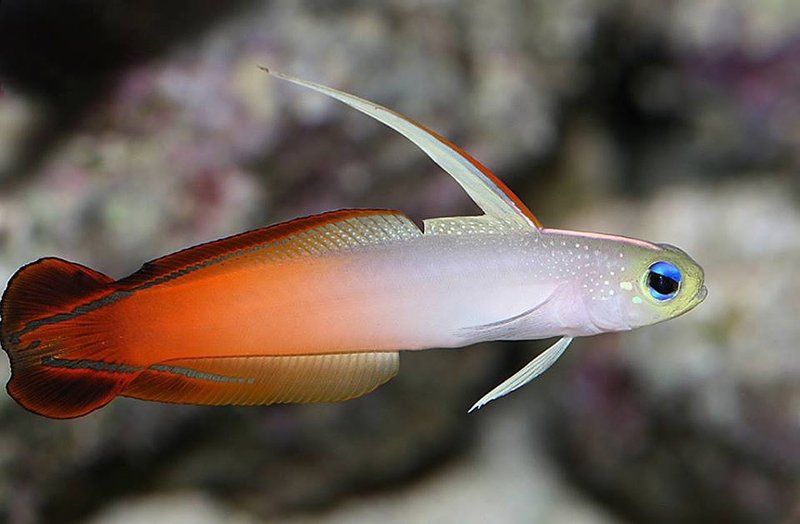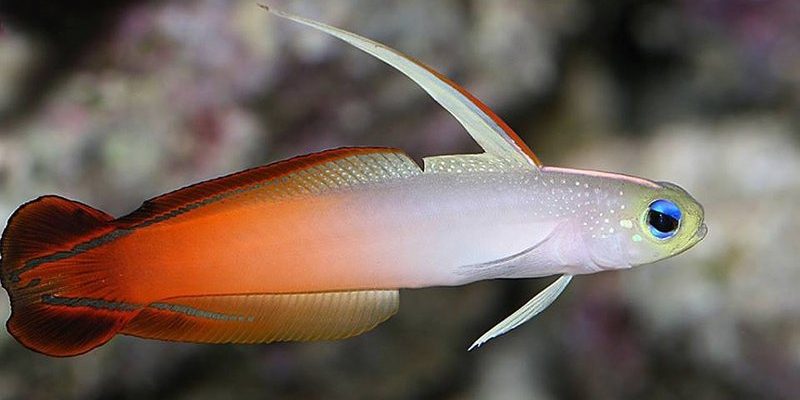
Here’s the thing: firefish thrive in specific conditions that mimic their natural habitat. Think of it as creating a cozy little home where they feel safe and secure. To give them the best environment, you’ll need to pay attention to factors like water quality, tank size, and compatible tank mates. Let me explain how to set the stage so your firefish can flourish in your aquarium.
Understanding the Firefish Species
Before diving into care specifics, let’s get to know the firefish a bit better. There are mainly two types you might encounter in the aquarium trade: the Firefish Goby (Nemateleotris magnifica) and the Purple Firefish (Nemateleotris decora). Both species boast striking colors and similar care requirements, but they do have a few differences worth mentioning.
Firefish are generally recognized by their elongated bodies and vibrant fins, making them a real centerpiece in any aquarium. They typically grow to about 4-5 inches in length and are naturally found in shallow, coral-rich waters in the Indo-Pacific. Here’s the kicker: they have a unique behavior where they often hide in rock crevices or among corals, darting out to feed and explore before retreating back to safety. Understanding their natural habits is key to creating a suitable environment.
When caring for firefish, it’s important to remember that these creatures can be a bit skittish. They thrive in calm, stable environments and need places to hide. If you’re thinking about introducing one to your aquarium, consider how it will adapt to your existing setup.
Setting Up the Right Aquarium Environment
Creating the perfect home for your firefish is crucial. Start with a minimum tank size of 20 gallons. Smaller tanks can be tricky to maintain, and firefish need space to swim and explore. A larger tank will help mitigate territorial disputes if you choose to add more fish down the line.
Next, focus on the substrate and live rock. A sandy substrate closely resembles their natural habitat. Layering it with live rock not only provides hiding spots but also promotes beneficial bacteria growth, which is essential for maintaining water quality. Honestly, the more hiding spots you provide, the happier your firefish will be. Think of it as ensuring they have cozy corners in their home where they can feel secure.
Lighting is another important aspect to consider. Firefish prefer moderate lighting, which mimics their natural environment. Too bright can stress them out, so aim for a balance—enough light to showcase their colors without creating a harsh glare. Keeping water currents moderate is also key, as these fish are not strong swimmers and appreciate a less turbulent environment.
Maintaining Water Quality
Water quality is paramount in caring for firefish. They’re sensitive to changes in their environment, so consistency is vital. Start by regularly testing the tank water for key parameters like salinity, pH, ammonia, nitrite, and nitrate.
– Salinity: Aim for a salinity of 1.020 to 1.025.
– pH: Keep it between 8.1 and 8.4.
– Ammonia and Nitrite: Both should ideally be at 0 ppm.
– Nitrate: Keep this under 20 ppm.
Regular water changes—about 10-15% weekly—are a good practice to ensure your firefish stay healthy. This helps remove harmful toxins while replenishing important minerals. If you notice any fluctuations in water quality, it’s essential to take action immediately, as firefish can exhibit stress through hiding or erratic swimming.
Using a good quality protein skimmer can also help maintain clean water by removing organic waste before it breaks down into harmful compounds. Remember, a well-maintained tank is a happy tank!
Feeding Firefish: What, When, and How
Feeding firefish is another important part of their care. These fish are carnivorous and enjoy a varied diet. You might be wondering what exactly they should eat. Here’s a solid starting list:
- High-quality pellets or flakes designed for marine fish.
- Live or frozen brine shrimp and mysis shrimp for variety.
- Occasional small pieces of frozen food like bloodworms or zooplankton.
Feeding them once or twice a day is generally sufficient. Start with small portions that they can consume within a few minutes. Overfeeding can lead to water quality issues, which is something you definitely want to avoid.
You might also consider using a feeding ring to keep the food in one area of the tank. This can help your firefish feel more secure while they eat, especially if they’re shy. Observing their eating habits is also important—if they’re not eating, it could be a sign of stress or health issues.
Choosing Compatible Tank Mates
When it comes to firefish, choosing the right tank mates can make or break their overall happiness. Since they can be timid, it’s best to select peaceful species that won’t bully or outcompete them for food. Here are some compatible options:
- Clownfish
- Blennies
- Small gobies
- Damselfish (cautiously, as some can be territorial)
Avoid aggressive or overly large species, as these can stress your firefish. If you’re adding multiple fishes at once, consider introducing them in groups to decrease territorial behavior.
Remember to give them enough space by incorporating plenty of hiding spots. This allows your firefish to establish their territory without feeling threatened. Creating an environment where they can thrive alongside their tank mates is key for a harmonious aquarium.
Monitoring Health and Behavior
Monitoring your firefish for any signs of stress or illness is essential. Healthy firefish are active and curious. If you notice them hiding more than usual or not eating, it could indicate an issue. Here are some common health concerns:
– Ich: This parasite causes white spots on the skin and fins. If you spot this, treatment with medications designed for saltwater fish can help.
– Fin rot: Look for any fraying or discoloration in their fins. This can be caused by poor water quality or injuries and may require specific treatments.
You may also encounter stress-related behaviors like hiding or quick darting movements. Consistent water quality and a stable environment are your best defense against stress.
If you ever feel uncertain about your fish’s health, consulting with a knowledgeable aquarium specialist is a great step. They can offer tailored advice based on your specific situation.
Caring for a firefish in a saltwater aquarium can be a rewarding adventure. By understanding their needs—such as water quality, diet, and compatible tank mates—you can create an environment where these beautiful fish can thrive. Remember, patience is key.
Whether you’re a seasoned aquarist or a total newbie, giving your firefish the right care not only enhances their beauty but also adds life to your aquarium. And there’s nothing quite like watching them flourish in a well-maintained tank. So, roll up your sleeves, get your hands wet, and enjoy the journey of nurturing these colorful denizens of the sea!

